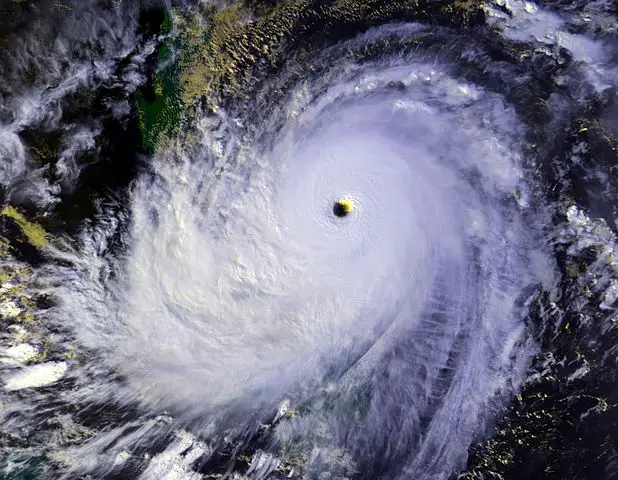The hurricane is a large, rotating, sustained surface wind of at least 74 mph. Due to earth’s rotation, these storms spin counterclockwise in the Northern Hemisphere, and clockwise in the Southern Hemisphere. Both these types of hemispheric spins are called cyclonic rotations. These cyclonic rotations, when occurring at 74 mph or faster, are called hurricanes.
These storms are called hurricanes in the United States, severe tropical cyclones in Australia, typhoons in the Northwest Pacific, and chubasco in the Philippines. Hurricanes are one of the ways by which nature tries to attain an energy balance between the surface and the atmosphere. During summer time, lots of solar energy released by the Sun gets absorbed into tropical waters, and the water heats up. A hurricane acts like a conductor that transfers heat energy from the waters as a current of very warm moist air, rising up to the surface. This transferred heat will start condensing massive amounts of water vapor. When this happens, the heat is released into the core, and lowers the pressure at that place. This lowered pressure accelerates the wind around the core, which is called a thunderstorm. The inward spiraling winds whirl upwards, and release heat and moisture before descending. The rotation of the earth causes the rising column to twist. Vigorous thunderstorms and high winds combine to form a cluster of thunderstorms, which can become a seed for a tropical storm like the hurricane. The high amount of energy is carried by the water vapor from the warm tropical waters. About 90% of energy gets released by condensation. This in turn warms the moist air locally, and lowers its pressure. So the winds will try to fill up that low pressure area. Still more warm, moist air tends to be added to this system, feeding it more energy. Thus the hurricane is a self-sustaining heat engine. Studies show that only 3% of its total energy will be converted into mechanical energy of circulating winds. This small amount equates to six months supply of electrical energy for the whole of the USA.













Leave a Reply